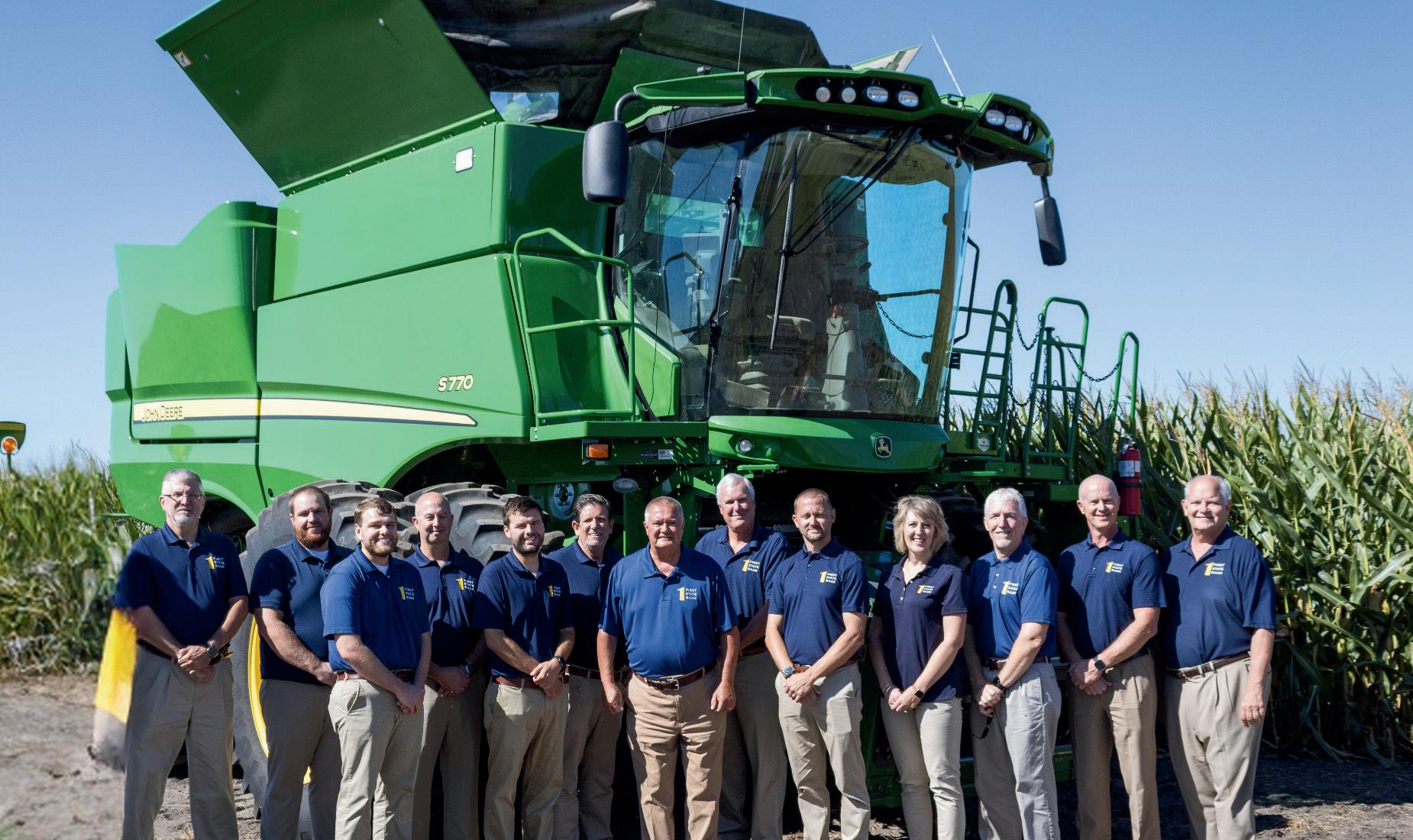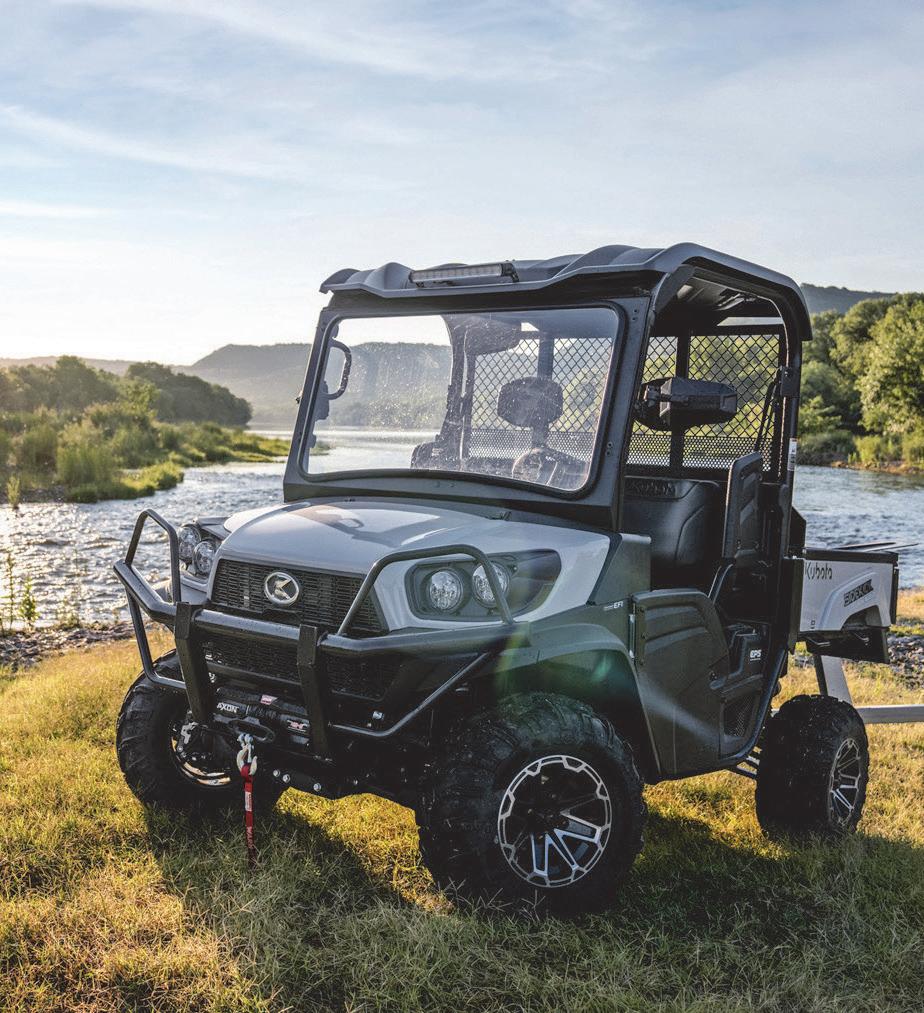Vegetable garden blossoms into flower farm
By MARTHA BLUM mblum@shawmedia.com
DUNDEE, Ill. — A desire to garden and grow food has developed into a cut flower farm for Anna Guziak-Prochnicka.
“I’ve been a wedding photographer for many years,” said Guziak-Prochnicka, owner of Gold Fern Farm. “I love doing weddings, but I didn’t enjoy editing pictures on the computer.”
Guziak-Prochnicka was interested in growing vegetables for her family, but she didn’t have a place to plant a garden.
“I met Cliff and I became a customer and then friends,” she said.
Cliff McConville operates All Grass Farms on the Brunner Family Forest Preserve on a long-term lease.
“In 2016, I volunteered at the farm once a week for four hours,” said Guziak-Prochnicka during a Women Caring for the Land Learning Circle event organized by the Land Conservancy of McHenry County. “I was exhausted, but I loved it.”
The following year, Guziak- Prochnicka started growing her own vegetables and herbs and she planted a few flowers at the same time on land pro-
vided by McConville.
Now, Gold Fern Farm includes a greenhouse and hoop houses, as well as many beds for growing flowers, vegetables and herbs.
Guziak-Prochnicka grows lots of different dahlias, as well as many other kinds of flowers, including marigolds, chrysanthemums and zinnias that she sells as cut flowers and bouquets at farmers market.
“I am converting this part of the garden into beds for perennial flowers and native plants,” she said. “I would love to convert the whole farm to notill and get rid of the plastic, but it helps me with the weeds.”
In one of the hoop houses, Guziak-Prochnicka is growing tomatoes and basil with dahlias down the middle.
“Then I rotate those and I always grow tomatoes for my family,” Guziak-Prochnicka said.
“This year is time of transition,” she said. “I want to go more into healing soil and humans with gardening and the beauty of flowers by allowing people to be in a space that’s beautiful.”
NATIVE PLANTS
Sarah Michehl, community ecol -
ogist for The Land Conservancy of McHenry County, has converted about two-thirds of her 1.2-acre lot in Crystal Lake into native plants.
“We killed the grass and used a seed mix,” Michehl said.
“All of our native plantings have become a venue for my daughter to create bouquets,” she said. “For cut flowers, we are choosing plants that hold their structure and their petals.”
For the bouquets, Michehl doesn’t only use flowers.
“We use grasses in arrangements and what we think looks cool,” she said. “I’ve had bouquets last longer than a week as long as I refresh the water.”
LAND ACCESS
Illinois FarmLink is a statewide land access program for both farmers and landowners.
“We’re a land-linking program that started in northeastern Illinois and last year we launched to include the entire state,” said Jeanne Janson, coordinator and navigator for Illinois FarmLink, during the event.
“We have a website that has a profile system, for farmers looking for land or landowners looking for farmers,” Jan-

son said. “You can create a profile on our website that will help connect you with the person you are looking for.”
The nonprofit organization also offers free advising for Illinois residents.
“We’ll brainstorm to figure out a plan for you to get from A to B to C,” Janson said. “We will help you with the vision you have for your future.”
Since many land-access issues are intimidating for some people and sometimes confusing, Janson said, Illinois FarmLink strives to put information into plain language.
“We’re creating a document on the farmland-buying process,” she said.








Tabletop display demonstrates importance of soil management
By TOM C. DORAN tdoran@shawmedia.com
SPRINGFIELD, Ill. — A Natural Resources Conservation Service display brought the field to the Illinois State Fair.
The tabletop display demonstrated the interaction between water and soils with different characteristics and management practices.
The infiltration demonstration featured two Ipava soils taken about 500 feet apart from a Morgan County field — one in conventional tillage, the other minimal tillage with year-round cover.
The other two samples were loess soils, one being silty loam adjacent to a woodland, the second was from a yard in Springfield.
The same amount of water was applied to each of the four displays, showing the differences in runoff based on the soil.
Marc Zucco, NRCS resource soil scientist who covers 26 counties in west-central Illinois, began the demonstration comparing the differences in the two Ipava soils.
“The main difference in the Ipava soil is the actual management. One has no cover and conventional tillage
with corn and soybeans and looks like it’s sort of sealing over,” Zucco said.
“The other is soil that has been under minimal tillage for 15 to 20 years with an extra crop in the crop rotation — corn, soybeans and wheat. It also has had cover crops and they graze the cover crops. So, it’s kind of a Cadillac plan of conservation. We drip water onto the soils to kind of simulate rainfall.”
The display, located adjacent to the Illinois Department of Agriculture’s tent, had a steady flow of visitors from the time the gates opened.
LIVING SYSTEM
Zucco explained the soil/water interaction to booth visitors.
“Soil is a living system of organisms. It’s breathing, it’s respirating and the microbes are fed primarily by living roots,” Zucco said.
“Those roots give off exudates and they feed a variety of organisms which then they exude glues that hold the soil particles together and it creates pore spaces in the soil that allows water and roots even to get down into soil profile.
“That allows pathways for the water to move down deeper into the soil


which then stays there longer in the organic matter and is available for crops.
“Tillage has broken up the soil structure in the other sample. The broken-up particles fill in the voids and it basically seals the tilled soil and it runs off, carrying particles with it.
“If this was a field, it would be running off into a waterway and moving, whereas the water infiltrates the soil with conservation practices.”
The other two samples were silty loess soils that were included in the demonstration to offer another comparison.
“One is a silty loam kind of soil. It’s marginal soil on the edge of a field that’s been under trees for a very long time, and the other is from a yard in Springfield that’s also a loess. The runoff is a lot clearer,” Zucco said.
“One thing with this one being that it’s in a yard, the top grass is being mowed because it’s in a yard. So, the root systems are there to allow infiltration. While it does appear to have a lot of infiltration, it won’t go nearly as deep as soil that has the bigger crops that have deeper, more extensive roots.
“We’ve found this to be a nice little display. They’re virtually exactly the same soil. It’s very, very close. It’s the management that makes a difference.”

Marc Zucco, Natural Resources Conservation Service resource soil scientist, gives a water infiltration demonstration using the same soil types with different outcomes based on management practices at the Illinois State Fair.
This was the first time this display has been featured at the fair, at least in recent times.
“We’ve had quite a few people come through here and have had little groups to talk to ever since we’ve been here since before 8 a.m. It’s going well,” Zucco said.





Alec Schwab
1019 La Salle St Ottawa, IL 61350-2018
www.countryfinancial.com/alec.schwab alec.schwab@countryfinancial.com (815) 433-1440

Kevin Berryman
1019 LaSalle St
Ottawa, IL 61350
www.countryfinancial.com/kevin.berryman kevin.berryman@countryfinancial.com (815) 433-1400
FALL FARM
State Fair sees attendance bump
By ERICA QUINLAN equinlan@shawmedia.com
INDIANAPOLIS — More than 850,000 people attended the Indiana State Fair this summer — almost 14,000 more than last year, making for a successful celebration of food, agriculture and entertainment.
The fair featured a new splash pad, outdoor basketball court, art exhibits, free concerts and more.
“We are thrilled with the overwhelming success of this year’s Indiana State Fair,” said Cindy Hoye, executive director of the Indiana State Fair Commission.
“The fair is an annual testament to the hard work and dedication of our leadership, staff, youth competitors, partners, volunteers and all participants. We are grateful to all our fairgoers who came out this year to celebrate this iconic summertime tradition.”
FAIR HIGHLIGHTS
• Final figures show an annual increase of fairgoers staying longer during each visit, with many vendors and partners reporting record sales.
• The return of $2 Tuesday welcomed large crowds, proving Hoosiers love this iconic promotion.
• More than 10,000 exhibitors and youth competitors showed or displayed a combined 52,000 animal and non-animal projects.
• Movie star Keanu Reeves performed on the Hoosier Lottery Free Stage.
• Social media star Jackson Farmer attended his first Indiana State Fair, where he fell in love with antique tractors and Pioneer Village.
“This year was special in many ways,” Hoye said. “Each year has its own memories, and the 2024 Indiana State Fair was one of our best. ‘The Art and Nature of Fun’ theme, with our partners at Newfields, brought incredible new exhibits and immersive experiences for our guests.”









Soy-based Goodyear tires donated to Indiana groups
By ERICA QUINLAN equinlan@shawmedia.com
INDIANAPOLIS — Indiana Soybean Alliance donated soy-based Goodyear tires to charities and public institutions across the state this year.
Goodyear has been replacing petroleum-based oil with soybean-based oil in certain brands of tires since 2017.
The farmer-nominated winners were:
• Cultivate Food Rescue in St. Joseph County, nominated by Joe Stoller of Bremen.
• Noble Transit Service in Noble County, nominated by Tom Griffiths of Kendallville.
• Putnam County Sheriff Department, nominated by Mark Legan of Coatesville.
• Hamilton Fire Department in Jackson County, nominated by Kevin Burbrink of Seymour.
“It means a lot,” said Todd Zeltwanger, director of fund development at Cultivate Food Rescue.
“It just helps us because we have a vehicle on the road that’s picking up and delivering food every single day, and these tires are going to last longer,
they’re going to be more efficient. And so, we’re very grateful for the opportunity to have these and look forward to the partnership with this organization down the road.”
Benefits of using soybeans in tires include:
• Soybean oil increases manufacturing efficiencies and reduces energy consumption while consuming surplus bio-based renewable material.
• Goodyear reports that soybean oil improves tire flexibility at low temperatures, helping the rubber to remain pliable in cold weather and enhancing traction in rain and snow.
“This is another great example of how checkoff work benefits soybean farmers,” said Kevin Cox, ISA Board chair .
“USB collaborated with Goodyear to develop these tires, and they’ve come up with a better tire that is better for the environment and better for our farmers, too.
“I am an Indiana soybean grower, and there are more than 20,000 others like me across our state. We’re very happy to see new markets developed with our product.”

Goodyear won the Tire Technology International Award for Innovation and Excellence in the category of “Environmental Achievement of the Year” in 2018 for its patented soybean oil polymer.













































